Related Research Articles

Ibn Sina, commonly known in the West as Avicenna, was a Persian polymath who is regarded as one of the most significant physicians, astronomers, philosophers, and writers of the Islamic Golden Age, and the father of early modern medicine. Sajjad H. Rizvi has called Avicenna "arguably the most influential philosopher of the pre-modern era". He was a Muslim Peripatetic philosopher influenced by Greek Aristotelian philosophy. Of the 450 works he is believed to have written, around 240 have survived, including 150 on philosophy and 40 on medicine.
The Book of Healing is a scientific and philosophical encyclopedia written by Abu Ali ibn Sīna from medieval Persia, near Bukhara in Maverounnahr. He most likely began to compose the book in 1014, completed it around 1020, and published it in 1027.
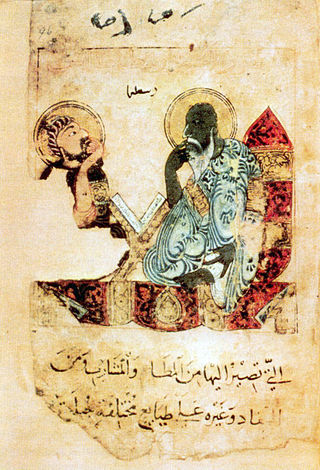
Islamic philosophy is philosophy that emerges from the Islamic tradition. Two terms traditionally used in the Islamic world are sometimes translated as philosophy—falsafa, which refers to philosophy as well as logic, mathematics, and physics; and Kalam, which refers to a rationalist form of Scholastic Islamic theology which includes the schools of Maturidiyah, Ashaira and Mu'tazila.
Early Islamic philosophy or classical Islamic philosophy is a period of intense philosophical development beginning in the 2nd century AH of the Islamic calendar and lasting until the 6th century AH. The period is known as the Islamic Golden Age, and the achievements of this period had a crucial influence in the development of modern philosophy and science. For Renaissance Europe, "Muslim maritime, agricultural, and technological innovations, as well as much East Asian technology via the Muslim world, made their way to western Europe in one of the largest technology transfers in world history.” This period starts with al-Kindi in the 9th century and ends with Averroes at the end of 12th century. The death of Averroes effectively marks the end of a particular discipline of Islamic philosophy usually called the Peripatetic Arabic School, and philosophical activity declined significantly in Western Islamic countries, namely in Islamic Spain and North Africa, though it persisted for much longer in the Eastern countries, in particular Persia and India where several schools of philosophy continued to flourish: Avicennism, Illuminationist philosophy, Mystical philosophy, and Transcendent theosophy.
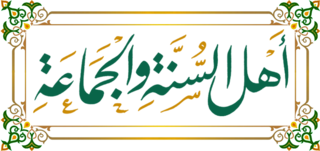
Ashʿarī theology or Ashʿarism is one of the main Sunnī schools of Islamic theology, founded by the Arab Muslim scholar, Shāfiʿī jurist, reformer, and scholastic theologian Abū al-Ḥasan al-Ashʿarī in the 9th–10th century. It established an orthodox guideline based on scriptural authority, rationality, and theological rationalism.
ʿIlm al-Kalām, usually foreshortened to Kalām and sometimes called "Islamic scholastic theology" or "speculative theology", is the philosophical study of Islamic doctrine ('aqa'id). It was born out of the need to establish and defend the tenets of the Islamic faith against the philosophical doubters. However, this picture has been increasingly questioned by scholarship that attempts to show that kalām was in fact a demonstrative rather than a dialectical science and was always intellectually creative.

The microcosm–macrocosm analogy refers to a historical view which posited a structural similarity between the human being and the cosmos as a whole. Given this fundamental analogy, truths about the nature of the cosmos as a whole may be inferred from truths about human nature, and vice versa.
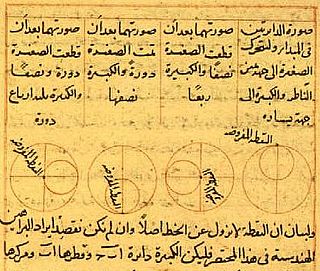
Science in the medieval Islamic world was the science developed and practised during the Islamic Golden Age under the Umayyads of Córdoba, the Abbadids of Seville, the Samanids, the Ziyarids, the Buyids in Persia, the Abbasid Caliphate and beyond, spanning the period roughly between 786 and 1258. Islamic scientific achievements encompassed a wide range of subject areas, especially astronomy, mathematics, and medicine. Other subjects of scientific inquiry included alchemy and chemistry, botany and agronomy, geography and cartography, ophthalmology, pharmacology, physics, and zoology.

Abu Rayhan Muhammad ibn Ahmad al-Biruni commonly known as al-Biruni, was a Khwarazmian Iranian scholar and polymath during the Islamic Golden Age. He has been called variously the "founder of Indology", "Father of Comparative Religion", "Father of modern geodesy", and the first anthropologist.
Abu Mohammed Abdellah Ibn Mohammed Al-Azdi, known also as Ibn Al-Thahabi or Ibn al-Zahabi was an Arab physician, famous for writing the first known alphabetical encyclopedia of medicine.
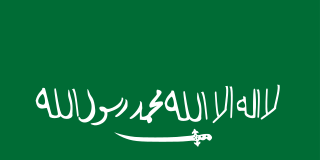
The Ikhwan, commonly known as Ikhwan min ta'a Allah, was a traditionalist religious militia made up of traditionally nomadic tribesmen which formed a significant military force of the ruler Ibn Saud and played an important role in establishing him as ruler of most of the Arabian Peninsula in the Kingdom of Saudi Arabia.

Abu Sa'id Ahmed ibn Mohammed ibn Abd al-Jalil al-Sijzi was an Iranian Muslim astronomer, mathematician, and astrologer. He is notable for his correspondence with al-Biruni and for proposing that the Earth rotates around its axis in the 10th century.
Ibn Miskawayh, full name Abū ʿAlī Aḥmad ibn Muḥammad ibn Yaʿqūb ibn Miskawayh was a Persian chancery official of the Buyid era, and philosopher and historian from Parandak, Iran. As a Neoplatonist, his influence on Islamic philosophy is primarily in the area of ethics. He was the author of the first major Islamic work on philosophical ethics entitled the Refinement of Character, focusing on practical ethics, conduct, and refinement of character. He separated personal ethics from the public realm, and contrasted the liberating nature of reason with the deception and temptation of nature. Miskawayh was a prominent figure in the intellectual and cultural life of his time.

Islamic astronomy comprises the astronomical developments made in the Islamic world, particularly during the Islamic Golden Age, and mostly written in the Arabic language. These developments mostly took place in the Middle East, Central Asia, Al-Andalus, and North Africa, and later in the Far East and India. It closely parallels the genesis of other Islamic sciences in its assimilation of foreign material and the amalgamation of the disparate elements of that material to create a science with Islamic characteristics. These included Greek, Sassanid, and Indian works in particular, which were translated and built upon.
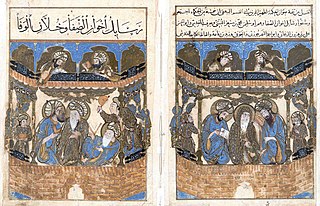
The Brethren of Purity were a secret society of Muslim philosophers in Basra, Iraq, in the 9th or 10th century CE.

The Encyclopedia of the Brethren of Purity also variously known as the Epistles of the Brethren of Sincerity, Epistles of the Brethren of Purity and Epistles of the Brethren of Purity and Loyal Friends is an Islamic encyclopedia in 52 treatises (rasā'il) written by the mysterious Brethren of Purity of Basra, Iraq sometime in the second half of the 10th century CE. It had a great influence on later intellectual leading lights of the Muslim world, such as Ibn Arabi, and was transmitted as far abroad within the Muslim world as Al-Andalus.
History of Islamic Philosophy, first published in 1996 with, is a collection of essays by various authorities on Islam in the Routledge series History of World Philosophies and is edited by Seyyed Hossein Nasr of George Washington University and Oliver Leaman of Liverpool John Moores University. The book has been well reviewed.
Islamic cosmology is the cosmology of Islamic societies. It is mainly derived from the Qur'an, Hadith, Sunnah, and current Islamic as well as other pre-Islamic sources. The Qur'an itself mentions seven heavens.

Ibrahim ibn al-Husayn ibn Abi'l-Su'ud al-Hamidi was the second Tayyibi Isma'ili Dāʿī al-Muṭlaq in Yemen from 1151 to his death in 1162.
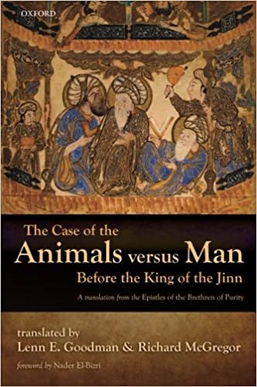
Fī aṣnāf al-ḥayawānāt wa-ʿajāʾib hayākilihā wa-gharāʾib aḥwālihā, known in English as The Case of the Animals versus Man Before the King of the Jinn, is an epistle written by the Brethren of Purity in the 960s and first published as Epistle 22 in the Encyclopedia of the Brethren of Purity. The longest Encyclopedia entry, The Case of the Animals versus Man revolves around a group of talking animals who testify against humans in a session chaired by the ruler of the jinn. It has been favourably received by literary critics and translated into several languages.
References
- ↑ Clarke 1980, pp. 250–251.
- ↑ Ragep 1994, pp. 504–505.
- ↑ Sabra 1968, p. 602-604.
- ↑ Rustom 2006, pp. 120–124.